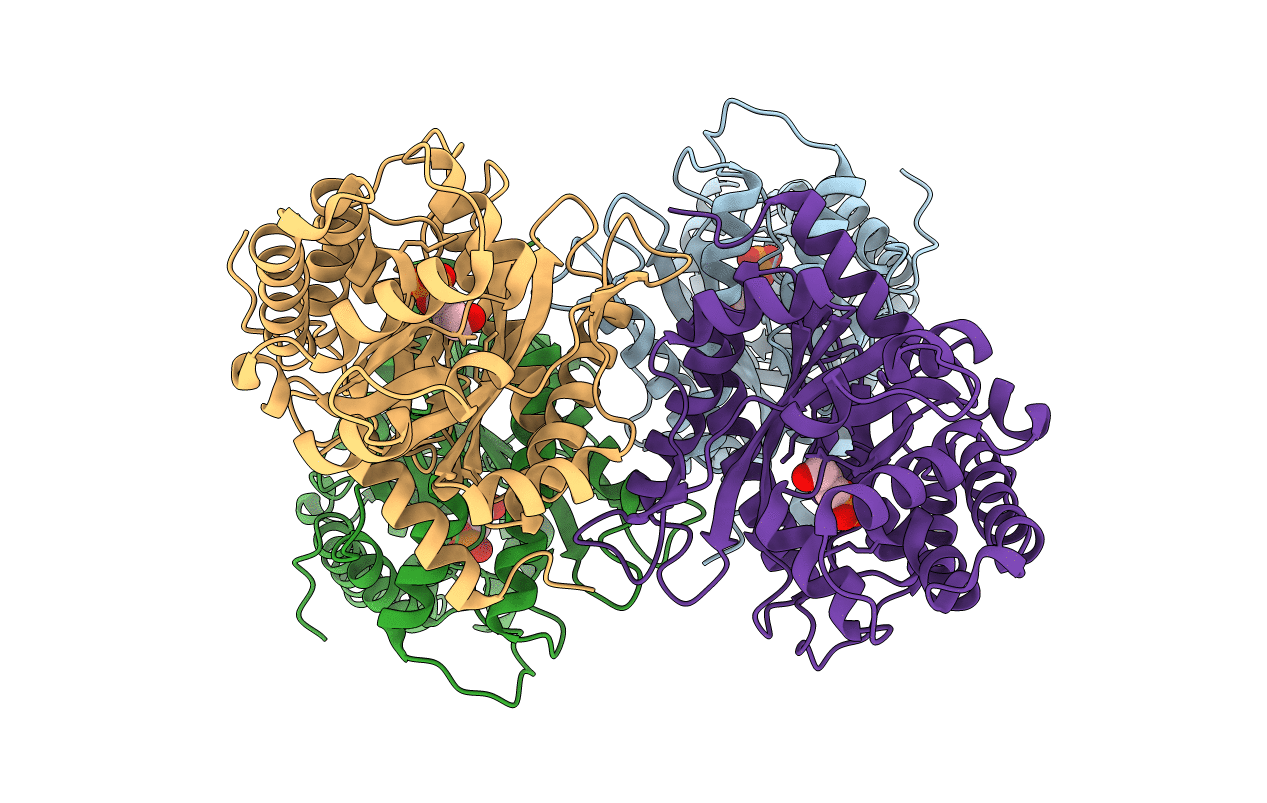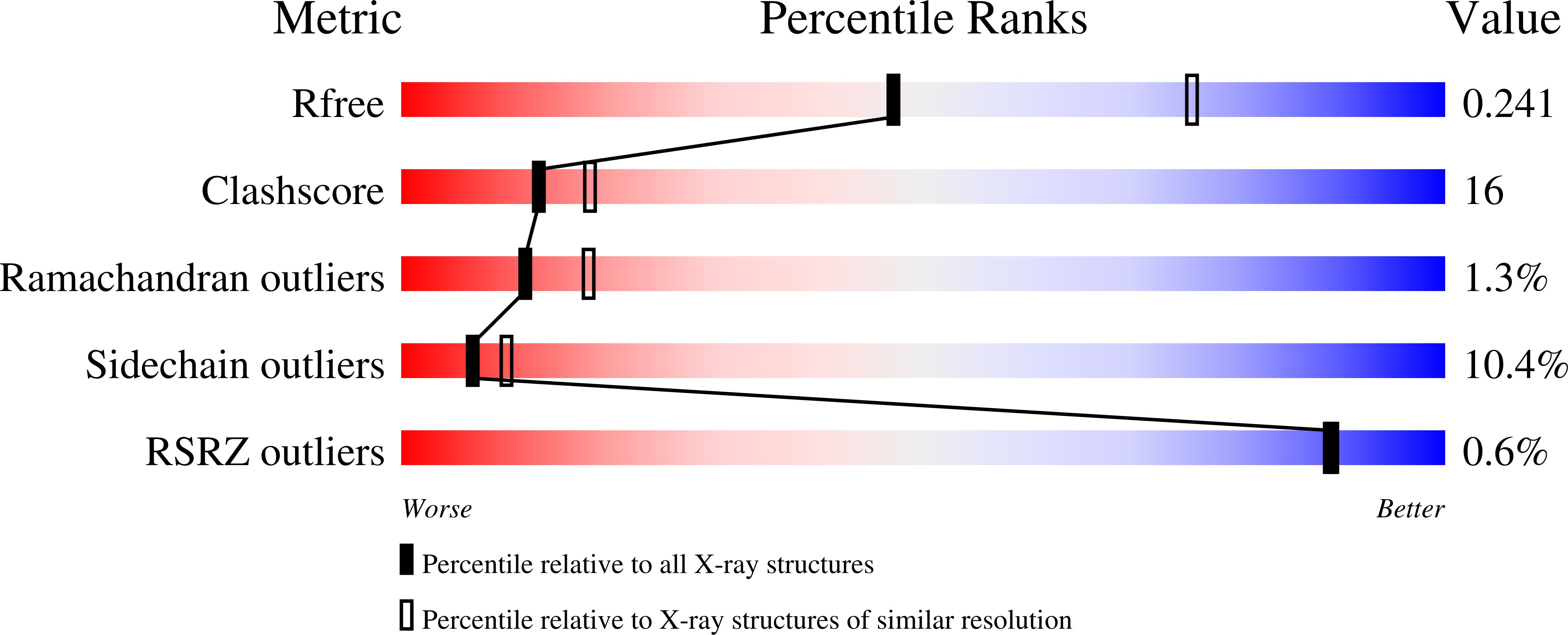
Deposition Date
2001-09-19
Release Date
2002-02-13
Last Version Date
2024-11-06
Entry Detail
PDB ID:
1J4E
Keywords:
Title:
FRUCTOSE-1,6-BISPHOSPHATE ALDOLASE COVALENTLY BOUND TO THE SUBSTRATE DIHYDROXYACETONE PHOSPHATE
Biological Source:
Source Organism:
Oryctolagus cuniculus (Taxon ID: 9986)
Host Organism:
Method Details:
Experimental Method:
Resolution:
2.65 Å
R-Value Free:
0.24
R-Value Work:
0.21
Space Group:
P 1 21 1


